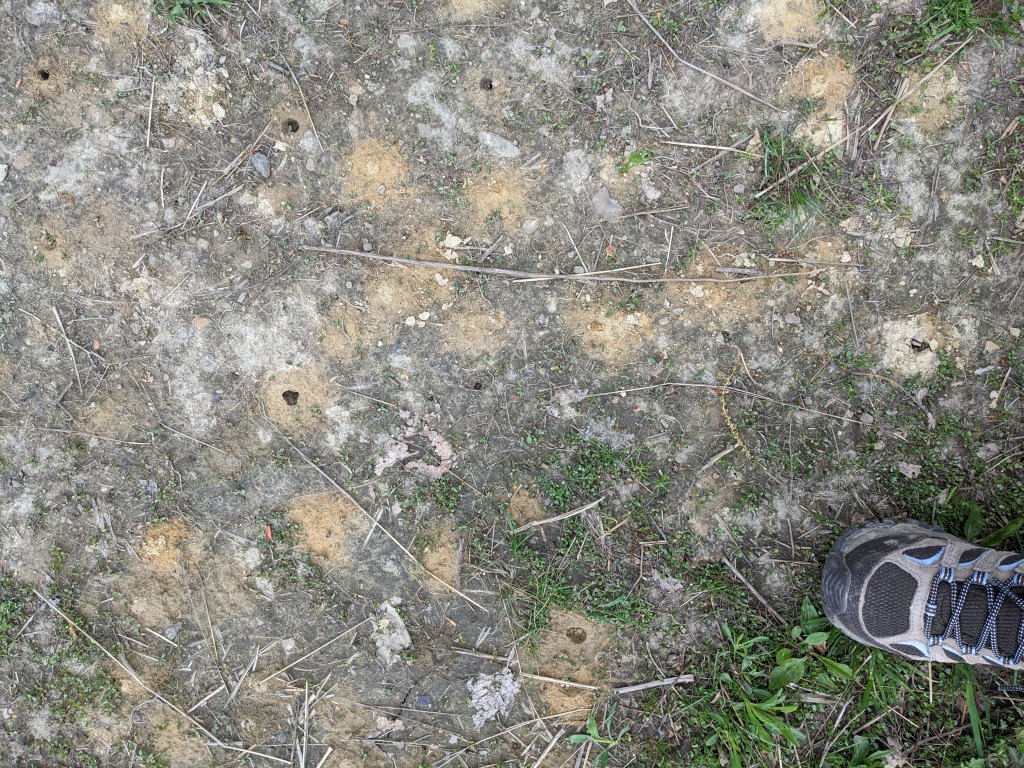
2 May 2023
On a hike at Hays Woods last week with Jared Belsky of the Pittsburgh Parks Conservancy we saw odd holes on a bare spot of ground, each one surrounded by a dust cone shaped like a tiny volcano. I could tell they where probably made by insects but which ones?

Jared told me these holes were constructed in March by cellophane bees.
Cellophane bees (Colletes inaequalis) are the first bees of spring, sometimes emerging while there’s still snow on the ground. They are members of the group called “plasterer bees” (Colletes sp.) described by Wikipedia below:
The genus Colletes (plasterer bees) is a large group of ground-nesting bees of the family Colletidae that occur primarily in the Northern Hemisphere. They tend to be solitary, but sometimes nest close together in aggregations. Species in the genus build cells in underground nests that are lined with a cellophane-like plastic secretion, a true polyester, earning them the nickname polyester bees.
— Wikipedia account: Colletes
Now that it’s May it’s too late to see cellophane bees making holes, but it’s not too late to learn about them and be ready to watch them next March.
p.s. Cellophane was invented in 1912 and polyester in 1928 so these common names of plasterer bees are only a century old.
(bee photo from Wikimedia Commons, holes photo by Kate St. John, embedded video by Nick Dorian on YouTube on YouTube)